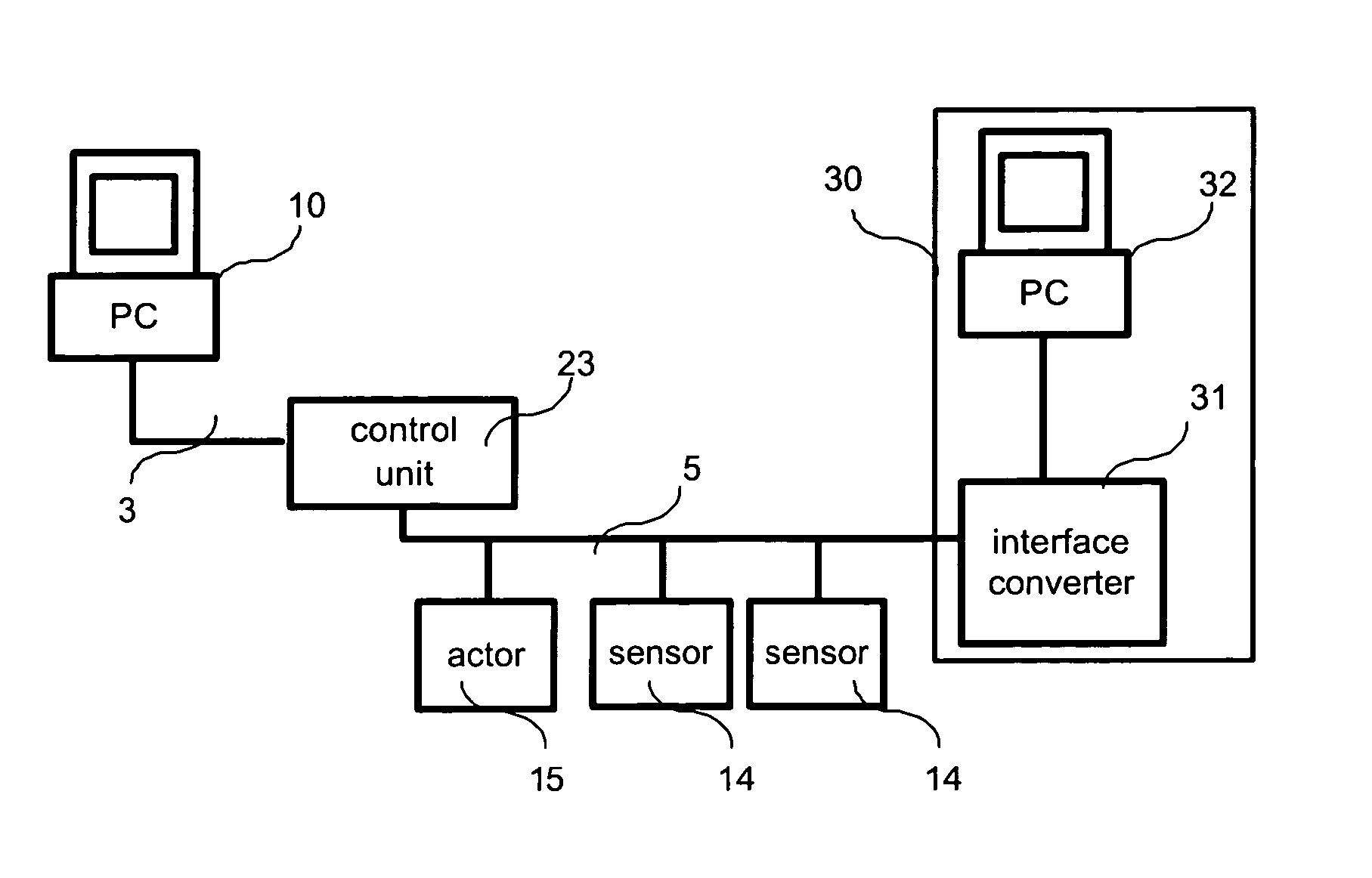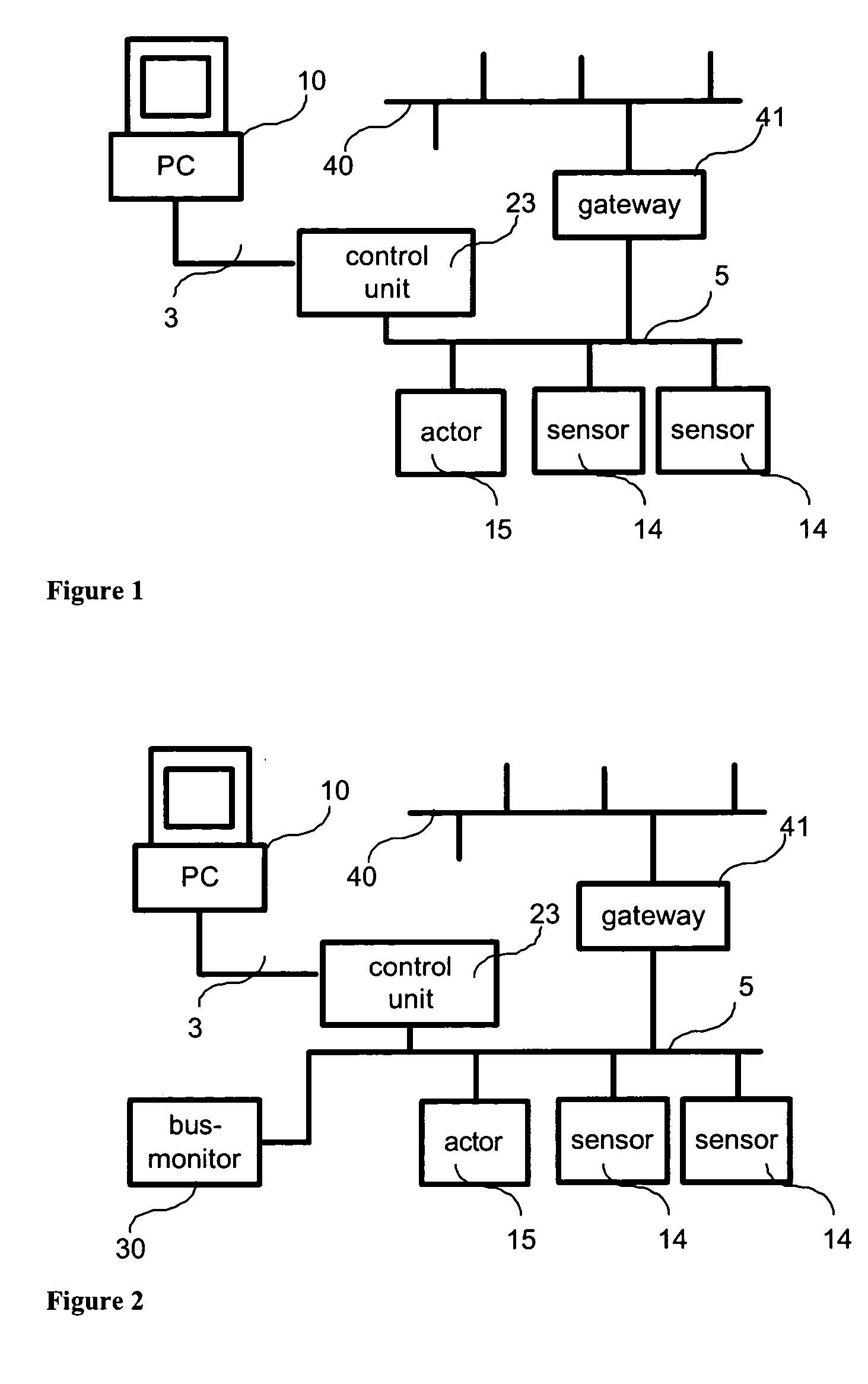Bus station with integrated bus monitor function
a bus station and integrated technology, applied in the field of bus stations, can solve the problems of not being able unable to provide information in time, and using additional external, often very expensive equipment, etc., and achieve the effect of modifying electrical characteristics
- Summary
- Abstract
- Description
- Claims
- Application Information
AI Technical Summary
Benefits of technology
Problems solved by technology
Method used
Image
Examples
Embodiment Construction
[0045]FIG. 1 shows the basic structure of a first digitally communicating bus system 5 with a control unit 23, sensors 14, and an actuator 15, each connected to the control unit 23 via the digitally communicating bus system 5. Control unit 23 may be any memory programmable controller (MPC) or specifically may be, for example, the evaluation center VEGALOG 571 of the company VEGA Grieshaber KG, Germany. The first bus system 5 may be any bus system, such as Fieldbus Foundation or Hart, however, Profibus PA or VBUS of the company VEGA Grieshaber KG, Germany, have turned out to be particularly suitable. In the present embodiment, control unit 23 has a configuration interface 3, in the present case coupled to a configuration computer 10. Configuration computer 10 is a common personal computer (PC) or may be a specific configuration device.
[0046] The first bus system 5 can be optionally complemented by a second bus system 40 via a gateway 41. The second bus system 40 represents an overla...
PUM
 Login to view more
Login to view more Abstract
Description
Claims
Application Information
 Login to view more
Login to view more - R&D Engineer
- R&D Manager
- IP Professional
- Industry Leading Data Capabilities
- Powerful AI technology
- Patent DNA Extraction
Browse by: Latest US Patents, China's latest patents, Technical Efficacy Thesaurus, Application Domain, Technology Topic.
© 2024 PatSnap. All rights reserved.Legal|Privacy policy|Modern Slavery Act Transparency Statement|Sitemap



